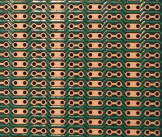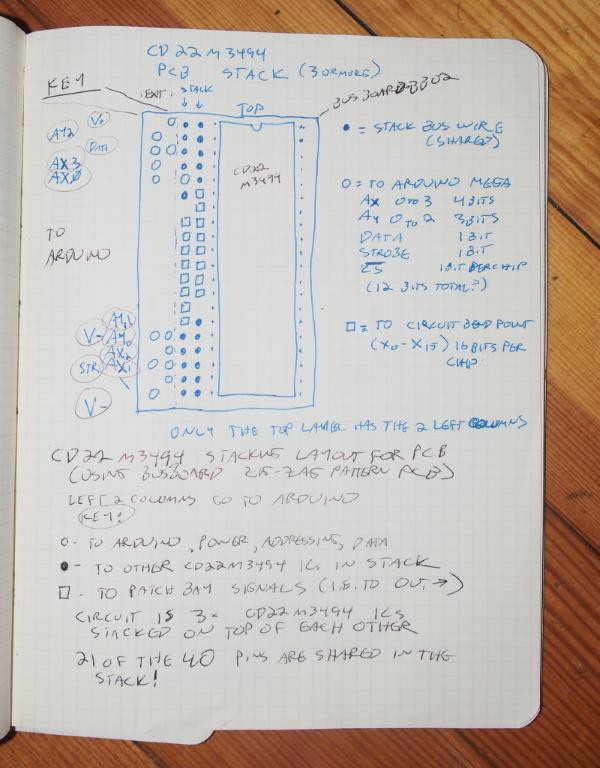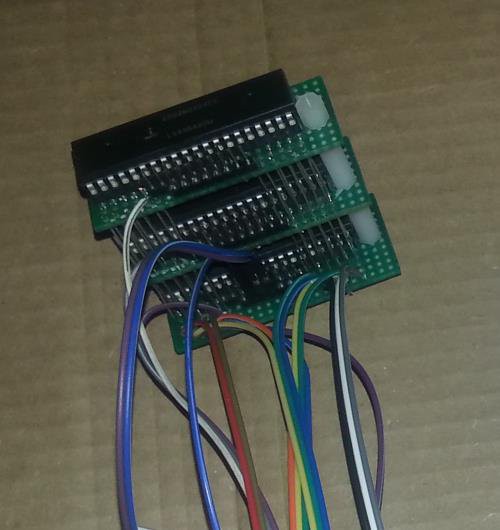The heart of the Patch-a-Tron is the stack of 3 CD22M3494 crosspoint array ICs. Together they control the 384 analog switches that turn our bends on and off. The IC uses 7 pins for addressing, 1 for switch data and 1 as a strobe (or clock) to time things. All of these pins and also the 8 x-axis pins and the positive and negative power pins are all connected in parallel for all of the ICs. Since the ICs share over half of their pins, it made sense to me to stack them vertically and run all of their common pins through a 'bus' of parallel wires.I used Busboard 'zig-zag' trace prototyping board (part no. BB02) for the stack and cut it to size because the zig-zag trace pattern offered the easiest routing.

Below is the board layout and wiring diagram for the switch stack. The entire circuit consists of 3 boards layed out as below each with it's own CD22M3494, all stacked together vertically. (Sorry there's no schematic yet. I literally designed the circuit in 3 dimensions in my head, then just constructed it. It has never been drawn out fully in 2 dimensions...)

And below you can see the finished stack of 384 analog switches! (the wires all go to the Arduino, the 16 switch connections for each IC are the male dupont headers on each layer).

Below is a schematic of the interface between the Arduino and the 3x CD22M3494 ICs. One thing that is worth ntoing about the CD22M3494 is that is has a separate logic ground than signal ground. The Vss pin is for the logic that controls the switches. The analog ground for the signals is the Vee pin. This is a nice feature escpecially if you're mixing different systems together. But since I already tied the Arduino into the Roland power supply, I ended up putting an SPST switch between Vss amd Vee so that I can selectively tie them together or not (whichever has the least noise).

 Alpha Charlie
Alpha Charlie
Discussions
Become a Hackaday.io Member
Create an account to leave a comment. Already have an account? Log In.